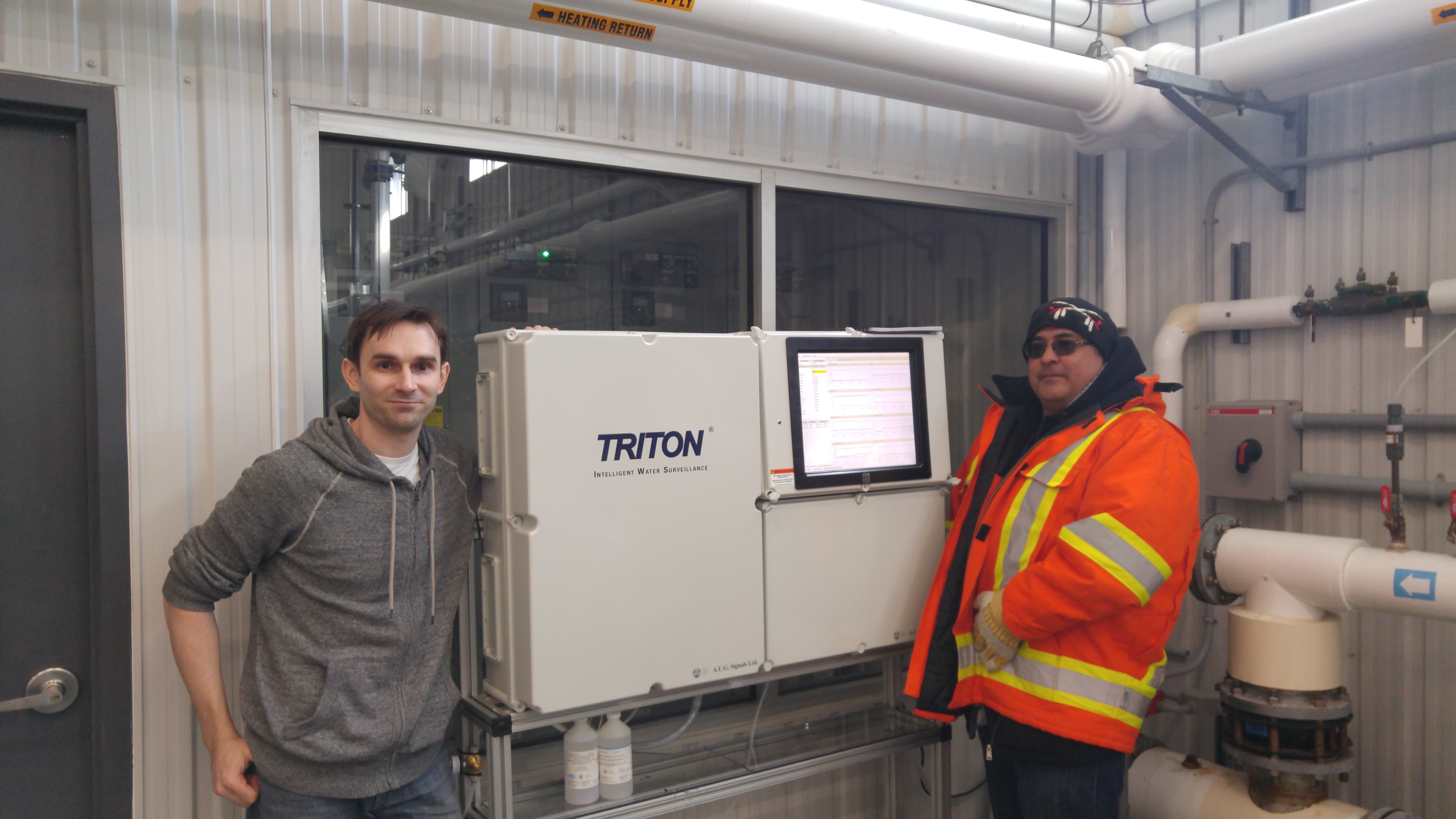In Canada, boil water advisories in First Nation communities regularly make headlines. Unfortunately, thousands of First Nation households across the country cannot drink the water that comes out of their tap.
One of the big challenges of ensuring safe drinking water in remote areas is the shortage of qualified operators to oversee treatment systems. In northern Ontario, for example, many communities are served by a single operator who visits just once or twice a month to take samples and make adjustments in the water treatment plants.
Meanwhile, certain tests cannot be done on the spot. Instead, the samples must be sent to a certified lab hundreds of kilometres away, adding further delays to obtain water quality data. As a result, it is difficult to identify and address problems in a timely way.
Remote water quality monitoring
That is where A.U.G. Signals Ltd. (AUG) comes in. The company’s TRITON Intelligent Water Surveillance® (TRITON) system can automatically monitor more than a dozen different parameters and contaminants on site, including turbidity, pH, temperature, free chlorine, nitrates, iron and more. It monitors water quality continuously, updating the results every 30 seconds so that operators know exactly what is going on.
If it detects any problems — or trends that could lead to problems if they are not addressed — TRITON immediately notifies operators with a text or email so they can take corrective action in a timely manner. For example, if chlorine levels start dropping, the TRITON system forecasts when they will drop below safe levels and sends an appropriate alert.
TRITON has been a big part of the Safe Water Project. Established in 2015 by the Chiefs of Keewaytinook Okimakanak (KO), the initiative aims to address the drinking water challenges faced by their communities in northern Ontario. Today, AUG has 21 systems installed in 19 First Nation communities. And the technology is making a big difference.
“Many of the communities are under either short-term or long-term boil water advisories,” explains Hannah Song, AUG’s business development officer. “Through the project, we witnessed five of the partner communities lifting long-term water advisories.”
AUG works closely with KO, which runs a Centre of Excellence in Dryden for training water-system operators. “That really allowed us to build a partnership with First Nation communities and really understand their needs,” Song says.
Now, AUG wants to tackle another common water issue in many remote communities: trihalomethanes (THMs).
Tackling THMs
THMs are potential carcinogens that can be created when chlorine is used to disinfect drinking water. The risk arises when the raw water entering the treatment plant has high levels of certain naturally occurring organic material.
Water system operators need to strike the right balance, carefully calibrating the amount of chlorine they add to ensure the water is safe to drink but THM levels stay low. That becomes difficult when samples are collected only once a month and it takes a week or more to get the lab results.
The Advancing Water Technologies (AWT) program was created by the Southern Ontario Water Consortium (SOWC) with support from the Federal Economic Development Agency for Southern Ontario (FedDev Ontario). An AWT project allowed AUG to team up with the municipality of Smiths Falls and the University of Toronto to test an alternative approach — a photonic spectrometer that can monitor THMs on site without the need for expensive equipment or expert personnel.
The 24-month project allowed AUG to prove that the photonic system can detect and quantify THMs in finished drinking water on a continuous basis. Over the course of the project, the collaborators were also able to identify and address hardware issues, such as slow speed and mechanical reliability. The result is a cost-effective system that can provide the remote monitoring and real-time reporting many communities need to effectively control THM levels.
“The SOWC funding really helped us to work with the academic partners and to speed up our research and development,” says Song.
Taking THM monitoring to remote First Nations
Now, as their THM monitoring system nears market readiness, AUG is eager to bring the technology to remote communities. When the Tribal Council heard that AUG had developed a remote monitoring system for THMs, they were keen to discuss piloting it in one of their communities.
And the benefits will not be limited to KO. “Right now we are focused on northern Ontario First Nation communities. We hope to expand to other First Nation communities across Canada,” Song explains. “And we are also targeting remote, small municipalities.” For example, a quarter of communities in Newfoundland suffer from high levels of THMs.
Song stresses the vital role previous provincial funding and AWT funding played in advancing and testing AUG’s innovative solutions. “We wouldn’t have been able to realize this without the government support,” she says.
Ultimately, that support is helping folks trust the water coming out of their taps. “Working in a company and in a project where we actually have an impact for those communities and populations, it really gives me an uplifting feeling,” says Song.


